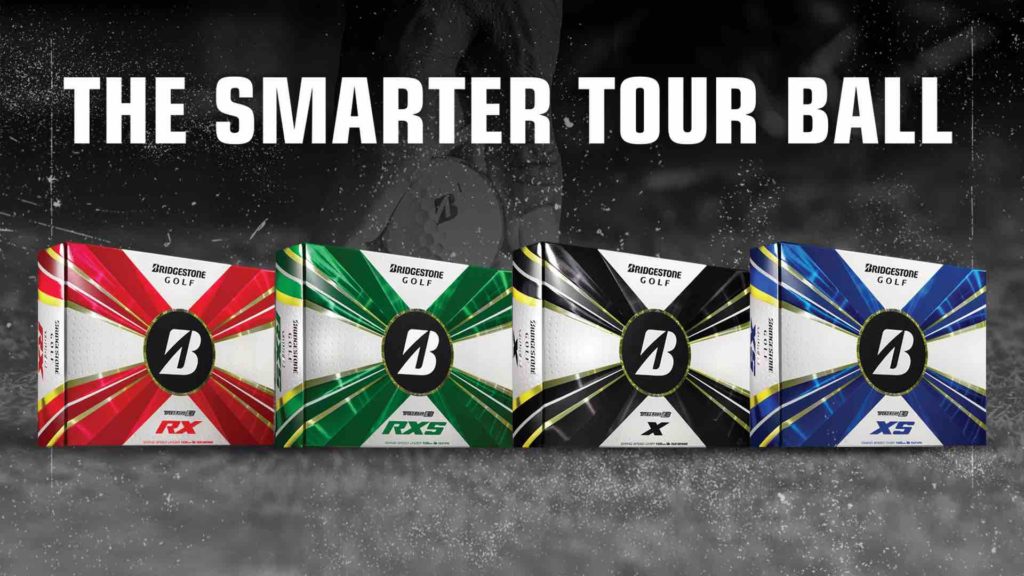The X and XS target players with driver speeds faster than 105 miles per hour, and the RX and RXS aim for those swinging slower than that. Each uses an “impact modifier” the company refers to as “Reactiv iQ” to alter the performance attributes of each ball.
AVAILABILITY/PRICE: The new Bridgestone Tour B line will be in stores February. Stay tuned for Aussie pricing.

THE DEEP DIVE: In its last iteration of its Tour B line of golf balls, Bridgestone brought the idea of “impact modifiers” – an additive to the urethane that acts as a shock absorber on slow-impact shots, thus delivering more spin. It also proved to be highly resilient on longer shots, resulting in more distance. In its newest versions of its Tour B line (encompassing the X, XS, RX and RXS models), Bridgestone continues down that path with a revamped use of impact modifiers it refers to as Reactiv iQ.
“We spent three-and-a-half to four years on the original concept of Reactiv,” said Elliot Mellow, marketing manager for Bridgestone Golf. “Two years ago, we started working on Reactiv IQ. It’s a smart material that utilises the impact modifiers to optimise the contact force needed for each shot. Instead of a blanket technology across all four models, we’re optimising for each individual model. In the first round of Reactiv, we spent most of the time making sure the ball was good for Tiger Woods and Bryson DeChambeau and not as much with the amateur golfer. This time around we spent a lot of time focusing on optimising the material for the everyday player, particularly in our RX and RXS models.”
Of course, when you’re blessed to be part of a company that has 900 engineers and specialises in rubber products such as tyres, there’s some technological horsepower to lean on. Add in owning more than 800 golf-ball patents, and access to players such as Woods and DeChambeau, and the possibilities abound.
Mellow likes to talk about the new balls in the sense of “contact science” – a concept borrowed from the tyre division. “Just like how the rubber meets the road with a tyre, how do we optimise the moment of impact on each shot?” he said. “How do we innovate beyond the driver and enhance other shots in a positive way?”
The key was in the blending of the impact modifiers. Two are used in the formula for the urethane cover on each model. One increases repulsion for more distance, and one enhances dwell time, or the amount of time the ball stays on the face. In the last version the same recipe was used for each ball. In the 2022 line, the recipe has been altered to change the blend for each ball to get the performance characteristic they wanted without the normal tradeoffs.
For the Tour B X the goal – somewhat driven by feedback from DeChambeau – was flatter flight and lower spin off the tee but more short-game spin around the green. For the XS, Woods’ input dictated a slightly flatter trajectory and lower driver spin along with, more importantly, slowing velocity on short-game shots so the ball was less jumpy and more consistent.
On balls made for mortals, the RX is designed to maintain the distance it had but enhance greenside control, resulting in approximately 200 additional rpms of spin on short-game shots. For the RXS, its greenside control was already good, but players wanted more distance while having it sound quieter with a perceived softer feel. On all four balls, the cores and mantle layers have remained basically untouched.
The new Bridgestone Tour B line of golf balls will be in stores in February at a price of $50 per dozen.
